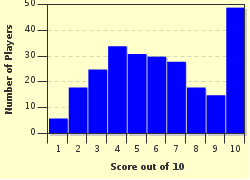Quiz Answer Key and Fun Facts
1. It was the best of prehistoric time(piece)s.
Some prehistoric peoples needed to keep track of the seasons to decide when to plant crops. According to Gerald S. Hawkins, author of "Stonehenge Decoded", the monument on Salisbury Plain was constructed as a lunar and solar calendar.
What innovative technology did he use to test his hypothesis that the alignment of the stones had celestial significance?
2. It was the best of Ancient Egyptian time(piece)s.
The Ancient Egyptians were the first people to leave a record of the technologies they used to divide up the day. When the Sun was visible, shadows were used to indicate the passage of time. At night, the apparent movement of the stars in relation to the Pole Star could be used instead.
What was the name of the device which was used to indicate the passage of time during the night?
3. It was the best of Chinese time(pieces).
Some of the earliest clocks (devices which depend on a regular action to mark off equal amounts of time) used the flow of water into or out of a vessel to measure time. There is evidence that these were in use in China in the 6th century BCE.
What name, literally "water thief", is used for these clocks?
4. It was the best of Medieval time(piece)s.
In Europe, one of the main drivers for the development of more accurate clocks was the need for monks to be able to pray at the designated hours. The first mechanical clocks were made in monasteries but by the early part of the 14th Century, public clocks began to appear elsewhere, on towers, churches, town halls and palaces.
Which country was the first to make use of public mechanical clocks?
5. It was the best of 16th century portable time(pieces).
The inventor often credited with the first clocks small enough to be carried, either on a neck chain or in a pocket, is Peter Henlein, a locksmith from Nuremberg in Germany.
Which component was the key to his success?
6. It was the best of 17th century time(piece)s.
Galileo Galilei had studied the motion of the pendulum several years before, but which Dutch scientist built the first clock using the principle of regular oscillation in 1656?
7. It was the best of 18th century time(piece)s.
In her 1995 book "Longitude", Dava Sobel told the story of the inventor of the marine chronometer, the highly accurate timepiece which enabled sailors to establish their longitude and location on the high seas.
What was his name?
8. It was the best of 19th century time(piece)s.
Until the 19th century, time was very much a local matter, with each town or city setting noon when the Sun was at its highest position in the sky at that location.
In the UK, which industry was at the forefront of the move to change to a standard time across a whole region or country?
9. It was the best of early 20th century time(piece)s.
At the beginning of the twentieth century, even though mass-produced wristwatches were worn by women, the pocket watch was still the timepiece of choice for men. However, in 1904, a prestigious jeweller was asked to create a wristwatch for Alberto Santos Dumont, the Brazilian aviator.
Who was the jeweller?
10. It was the best of 20th century time(piece)s.
The first battery-powered electric watch was made in 1957 and ultimately led to wristwatches with quartz movements.
Which company unveiled the world's first wristwatch with a quartz movement on Christmas Day 1969?
Source: Author
bucknallbabe
This quiz was reviewed by FunTrivia editor
crisw before going online.
Any errors found in FunTrivia content are routinely corrected through our feedback system.


